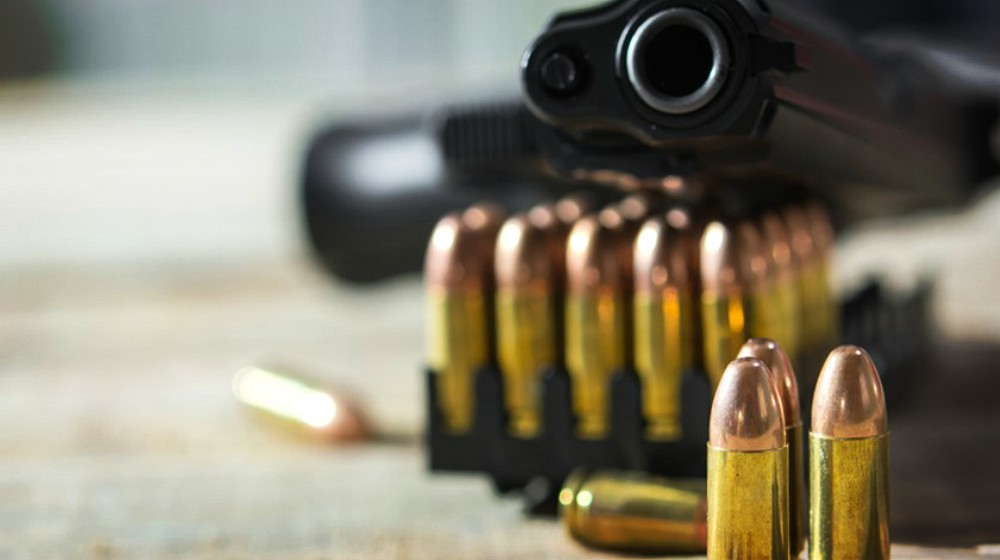Guns & Ammo
Choosing Your Self-Defense Ammunition
Published
1 year agoon
By
Marc Holley
How should you choose your self-defense ammunition? Making the right choice matters, so let's talk about which ones to get here today.
In this article:
- Why Self-Defense Ammo Matters
- Terminal Ballistics
- Hollow Point Bullets
- High-Quality Bonded Hollow Points
- Conclusion
What You Need to Know About Self-Defense Ammunition
Why Self-Defense Ammo Matters

There is a litany of self-defense ammunition available. These ammunitions have varying claims about temporary wound cavities, penetration, secondary and tertiary wound channels, even zombie stopping abilities. How do you cut through the misinformation of advertising and focus on what matters most?
First, we will share some terminal ballistics information with you. The purpose is to illustrate exactly what is happening when these high-performance rounds are impacting their intended targets. That will lead us to discuss how to interpret a manufacturer’s label and debunk some of the claims you’ve heard. By the end of this story, we will arm you with the knowledge to be critical about the self-defense ammunition to choose.
Hollow point bullets come in nearly all calibers. Each manufacturer has their own tweaks to achieve their ideal expansion and penetration.
Terminal Ballistics
https://www.facebook.com/GunCarrier/posts/765248466988292
We all know what happens when we pull the trigger, but what happens when that bullet impacts your target is just as important. Terminal ballistics is the study of “how a projectile behaves when it hits its target and transfers its kinetic energy to the target. The bullet’s design [and] impact velocity plays a huge role in how the energy is transferred.” – Hornady
Bullet design and impact velocity are the topics we’ll dive into today. Of the two, impact velocity is a factor misinterpreted in some ways. In the world of higher velocity rounds like rifle cartridges, a 5.56 NATO ball is going to impact its target around 3,000 feet per second, creating the massive temporary wound cavity due to hydrostatic shock.
This is the ideal way that a round should perform. However, due to the technological limitations of handguns and their ammunition, most handgun bullets travel at less than 1,600 fps. +P and +P+ aren’t even close to breaking into the threshold speed required to replicate the massive temporary wound cavity that rifle rounds create.
The role the speed of the bullet really plays is in regards to penetration. Since the temporary wound cavity isn’t going to cause the catastrophic damage a rifle round will, the handgun bullet expanding and penetrating deep enough is more likely to stop the threat.
Standards vary across the world, but United States federal and local level law enforcement standards look for 12 to 18 inches of penetration to consider a round effective. Why this number? This is what a round will encounter entering nearly any angle towards the thorax of the chest.
Hollow Point Bullets
Impact velocity is something you see by stamping it on the packaging. Manufacturers can only hope that customers know what they’re looking for. Bullet design, however, is where manufacturers can really set themselves apart. Some design features have better reasons than others.
The truth is, no amount of “radically invasive projectile” or ‘zombie rounds’ will consistently perform through hard and soft barriers. Enter your bonded hollow point collections. Firstly, why a hollow point? And why, specifically, a bonded hollow point? Hollow point bullets have varying degrees that cause the bullet to mushroom once it comes in contact with flesh.
The reason this happens is due to the hydrostatic pressure created in that divot. Human beings are made up of 80% water, a substance that doesn’t compress well (or at all). When you have that small amount of water-based flesh collect in the hollowed out point, the force behind it is going to cause the hydrostatic pressure to take the path of least resistance to escape the hollowed point. This is when the bullet peels back along its perforations, resulting in the recognizable mushrooming.
High-Quality Bonded Hollow Points
Most higher qualities bonded hollow points will perform better after hitting barriers. This includes denim, drywall, and sometimes even auto glass. However, not all hollow points are equal. In the most extreme of tests, we shot at ballistic gel through auto glass. Most of the non-bonded hollow points either disintegrated upon impact or had very limited penetration by fragments. However, the bonded hollow points retained most of their integrity after passing through the glass.
The hydrostatic pressure built up in the hollow point causes the bullet to split along the perforations and mushroom out.
Non-bonded hollow points through auto glass. The dust on the face of the ballistic gel is actually from one of the bullets disintegrating after hitting the glass. Other rounds fragmented and penetrated less than 6 inches.
Bonded hollow points retain their integrity and penetration after passing through auto glass. The main factor that kept the bonded hollow points intact was that the Gold Dots’ jacket and core were bonded at the molecular process via heating through their proprietary Uni-Cor® process. The failure of the other non-bonded bullets demonstrated the inability of those bullets’ core and jacket to stay together.
Some manufacturers claim to have bonded cores and jackets. However, due to the process not having a widely accepted standard, there is a varying degree of bond strength. Some will even use an adhesive similar to JB-Weld to bond their bullets. It saves money but still makes that claim.
Conclusion

In conclusion, the shiniest package may not be the ideal self-defense bullet for your purposes. It is also important to rotate these rounds as well. These cartridges get exposure to more everyday dirt and hand oil from unloading and rotating magazines over the year. Generally, it’s a good practice to shoot off your self-defense ammunition once every year.
After your first purchase, be sure to grab an extra box to train and discover issues caused by the ammunition. For the performance, we can most confidently recommend Speer Gold Dot on .380 up to .45 and Federal HST for 9 mm ammo to .45. Both had consistent penetration within the 12 to 18 inches standard. Be sure to remain critical of the bullet’s bonding process and ballistic gel penetration between 12 and 18 inches.
Learn more about self-defense ammunition in this video by Olde English Outfitters:
Whether you fall into any or none of these categories, becoming familiarized with what today’s self-defense ammunition is capable of is an important part of being a responsible gun owner. Ignoring this aspect of carrying a firearm can lead to underperformance when you need it the most or the collateral damage caused by over penetration.
Does the article help you understand self-defense ammunition better? Share your thoughts with us in the comments section below!
Up Next: How To Become A Gunsmith
Editor’s Note: This post was originally published on June 17, 2017, and has been updated for quality and relevancy.

CZ 75 SP01 Tactical Gun Review | Gun Carrier

PODCAST: Gun Law Changes All Across America Right Now

PODCAST: How to Win Olympic Gold

PODCAST: 50 Important Ideas For Self-Defense, Self-Reliance, and Personal Safety

10 Best Gun Safes In 2022 | Gun Carrier

DP-12 | Double Barrel Pump Shotgun Gun Full Review



Pingback: Out With The Old: 5 Guns You Should Get Rid Of | Gun Firing
Sam Lasley
June 6, 2021 at 10:29 AM
I want to buy boxes of 380 acp and can not find it available. Do you have any and please let me know.
FEDUP6
June 20, 2017 at 10:49 AM
Sig Sauer V-Crown also does an excellent job!